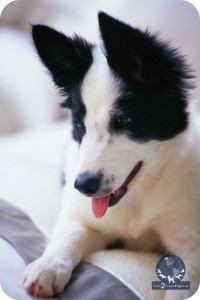 If you are a long time pet professional, you’ve probably mastered today’s topic. If you are fresh to the industry, you are probably struggling with it. How do you handle the dog that does not want to cooperate with the grooming procedure?
If you are a long time pet professional, you’ve probably mastered today’s topic. If you are fresh to the industry, you are probably struggling with it. How do you handle the dog that does not want to cooperate with the grooming procedure?
You’ve heard me say this about dogs before – but let’s do a quick review.
- They are hard-wired to think like a dog.
- They are a predatory pack animal.
- They are silent communicators.
- They read body language.
- They respond to energy.
It’s typical. Dog owners overuse the “no” word, yet never back it up. They don’t project the energy necessary to stop the behavior. Thus, they do not convey a strong pack leader presence. The issue they are trying to correct continues unchecked. Many dogs are not trained to understand basic rules and boundaries within their own family pack.
Dogs that are unruly, wiggly, or mildly aggressive on your grooming table have not had consistent training at home. You see it in your shops, salons, and mobile units don’t you?
It’s painful to watch someone who does not understand how to project authority work with these dogs. They think they can win the dog over by using high-pitched baby talk. First, they coo to the dog. Next, they try to reason with it. Not only are THEY getting more and more frustrated… so is the dog. Plus, any staff members within earshot of this ineffective banter are about to lose their minds!
The dog continues to be unruly… wiggly… mildly aggressive. The groomers’ frustration builds. Next, you hear:
“No!”
“Stop it”
“Quit it!”
“No! NO!! NO!!!”
As they spew out the words, their breathing is becoming short and rapid. Their energy is weak. They are losing control of the dog. Someone is going to get hurt – either the dog or the groomer.
So how do you stop this acceleration of bad behavior?
#1. Stop using the word “NO.”
#2. Remember the 3 C’s – stay Calm, Cool, and Collected.
#3. Correct undesirable behaviors before they manifest into an action from the dog.
#4. Be consistent, consistent, consistent.
First, you need to have the proper equipment. Always have control over the dog with a kennel lead or grooming safety loop. The leads and loops need to be adjusted high on the neck, right behind the ears.
 On leash, keep mild tension on the lead. Not so much that you are choking the dog, but enough so that you can control the pet. Once you know the pet, you will probably be able to relax the lead tension if they are mild-mannered and well-behaved. Adjust the tension of the grooming loop so that there is a very slight amount of slack when the dog is standing comfortably.
On leash, keep mild tension on the lead. Not so much that you are choking the dog, but enough so that you can control the pet. Once you know the pet, you will probably be able to relax the lead tension if they are mild-mannered and well-behaved. Adjust the tension of the grooming loop so that there is a very slight amount of slack when the dog is standing comfortably.
Here’s a trick for working with new dogs that I learned ages ago. I teach them what MY sound is for correcting an undesirable action. I use a sound – not an actual word. It comes from low in my gut, coming out sounding more like sharp grunt. While I use the sound, my breathing is deep and slow. My eyes are steady on the dog. I’m giving the dog eye contact that means business (women, you know what I’m talking about! We all have ‘the look.”). I gently, but firmly, redirect the dog as I wish them to behave.
As soon as the dog cooperates, I soften my eyes and my hands. I might give a calm, single word of praise combined with a gentle, reassuring stroke.
The SECOND the dog makes a move to repeat the undesirable action, I repeat the correction. I am consistent in the training. I never step out of the 3 C’s mental zone: Calm, Cool, and Collected
My 10 Rules When It Comes to Dealing with Challenging Pets
- Never work on a pet that you feel is dangerous to itself or to you.
- Always maintain the 3 C’s: Calm, Cool, and Collected.
- Remember that dogs are silent communicators that respond to energy.
- Never take an unfamiliar pet from the owner’s arms.
- Always maintain some form of physical control.
- Become a lifelong learner of canine psychology and body language.
- Remember that not all pets are candidates for all professional grooming settings.
- If the eyes glow red or green – DO NOT GROOM THE DOG.
- Humanity always comes before vanity.
- Your hands are your livelihood – always protect them.
We will constantly be faced with less than cooperative pets in our careers. It is always better for you to win the trust and cooperation of a pet for the grooming process. Most of the time, this translates into becoming a highly effective dog trainer.
Dogs are hardwired to think like dogs. We love them, even treat them like children, but we need to remember that they are not humans. They are dogs. The more experience you can have handling dogs, combined with actively studying their language, their psychology, the more effective you will become.
Remember these four important rules. Do not use the word “no.” Always abide by the Three C’s: Calm, Cool, and Collected. Correct undesirable actions before they become an issue. Finally, be super consistent in everything you do with a dog.
What techniques do you use to redirect challenging behaviors? Jump over to the Learn2GroomDogs Facebook page and tell us about it!
Happy trimming!
~Melissa

